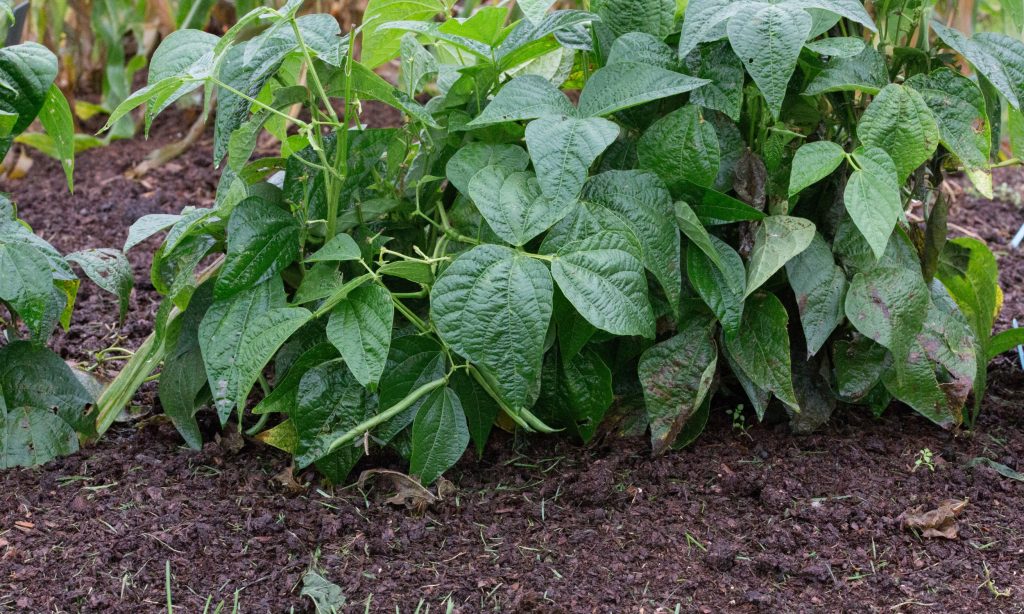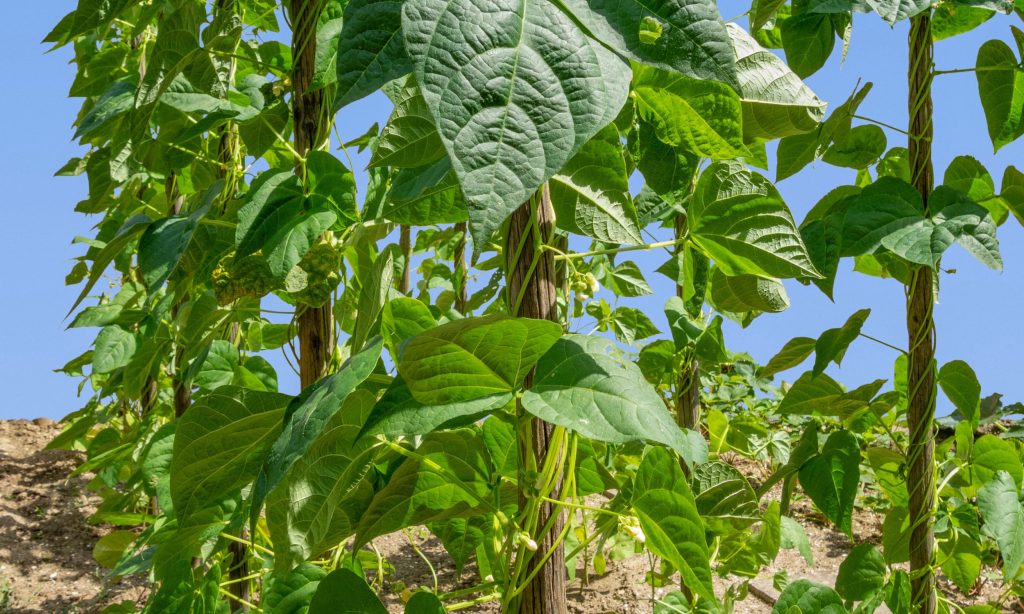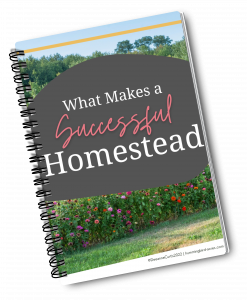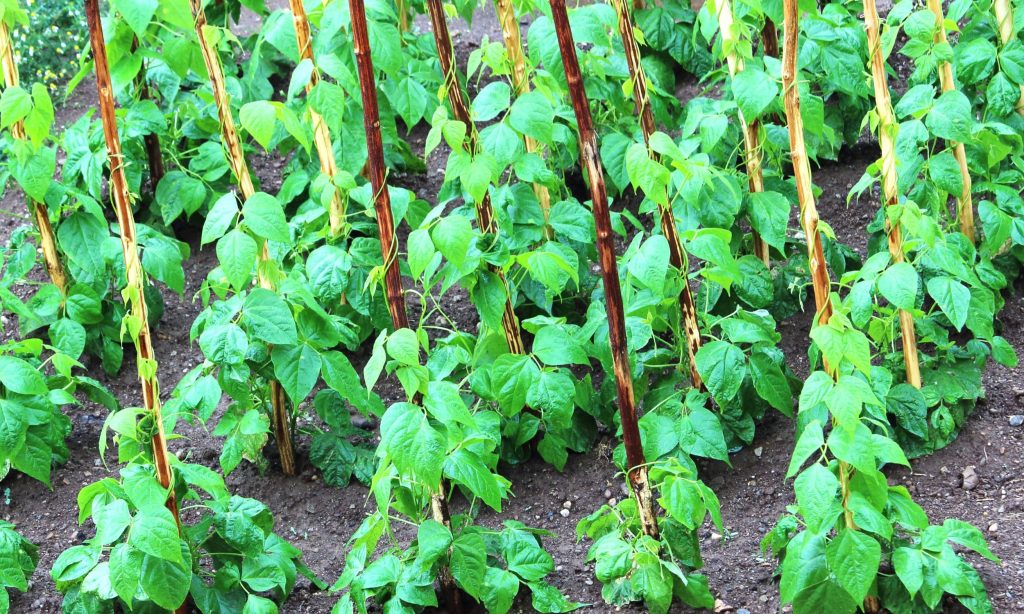Bush Bean vs Pole Bean. Which one Should I Grow?
Are you looking to grow beans in your home garden? It can be a bit overwhelming with all the different types of beans out there; from string beans, bush beans, lima beans, and more. In this blog post we’ll break it down for you between two main types of bean crops: bush bean vs pole bean. If you’re trying to decide which type is best for your garden space and needs, come along as we go into detail here about how they differ, what each has to offer in terms of nutrition and yield size, plus tips on how to start growing either bush or pole bean varieties at home!
Disclosure: Some of the links below are affiliate links, meaning, at no additional cost to you, I will earn a commission if you click through and make a purchase.
Overview of Bush Beans vs. Pole Beans – A Comparison
Snap, string, green – these terms are often thrown around when discussing pole and bush beans. But did you know that these seemingly uniform veggies actually come in a rainbow of colors? From bold reds to vibrant purples and speckled varieties, the options are endless. But before you get carried away with the color selection, it’s important to know the differences between these two types of beans to ensure the best harvest for your garden.
Here is how they are different:
Growth Styles
Their growth styles are the first and most significant difference between pole beans and bush beans. After all, it’s those different growth styles that earned them their names.
Bush bean plants don’t grow very tall or wide. Instead, they’re pretty compact and only reach a height of two or three feet at the most. So, as the name suggests, the overall shape of bush beans is that of a small bush plant.
That’s quite different from pole beans, though. Unlike bush beans, pole beans reach pretty far vertically. So, don’t be surprised if you discover a pole bean plant that grows as high as 10-15 feet tall!
Necessary Support
aka… the amount of physical support they need to grow.
Remember: bush beans don’t grow very tall. So, they don’t need any support to reach their full growth potential.
The same can’t be said about pole beans, however. As you saw earlier, they grow vertically as high as 10-15 feet. That means you’ll have to prepare enough support for pole beans to reach their full potential.
That support can be in the form of trellis or some kind of stakes that provide stability for the pole beans to grow.

Resistance To Diseases
When it comes to growing beans, pole beans and bush beans are not created equal. While pole beans have built-in disease resistance, bush beans are more vulnerable to getting sick. This means that if you opt for bush beans, you’ll have to put in more effort to keep them healthy. You’ll need to educate yourself on the potential diseases they could catch and take measures to prevent them. If you prefer a low-maintenance gardening style, pole beans might be the way to go. They’re hardy and less likely to cause you any worry.
Temperature Tolerance
When it comes to choosing between pole beans and bush beans, don’t forget to consider their temperature preferences. If you’re living in a cozy cooler climate, pole beans will definitely thrive, but if you’re basking under the heat, bush beans are definitely the better choice. By tuning into their temperature needs, you’re giving your favorite beans the best chance to flourish!

Harvesting Methods
Another essential difference to consider between pole beans and bush beans is the harvesting method you’ll have to use.
Unfortunately, it’s challenging to harvest bush beans manually. Although they grow close to the ground, that also means they grow too close to each other. As such, it’s hard to spot the parts you want to harvest.
Pole beans, on the other hand, grow very high. That means you can see every part of the plant that you’ll want to access and harvest quickly. Although, you might need a ladder to reach plants that grow up to 10-15 feet.
Necessary Growing Space
Pole beans and bush beans differ in how much space you’ll need to grow them.
Pole beans grow vertically while bush beans remain closer to the ground. The vertical growth of pole beans means that you don’t need as much space to plant them. That can be a blessing to do all your planting in a limited space.
Bush beans, on the other hand, require a broader space to grow. After all, they grow as small bush plants that take up more ground space.

How to Choose the Right Bean Type for Your Garden
The Choice Depends On Your Circumstances and Preferences.
Are you short on gardening space, but craving some fresh green beans? The solution might be right in front of you. If you’re looking for a compact option, pole beans are your best bet! They’re perfect for maximizing small growing areas and can provide a bountiful harvest of tasty green beans.
If you’re not feeling up to building some supports (we totally get it), bush beans could be the way to go. They won’t need the extra assistance to reach their full potential, but they’ll still provide plenty of delicious beans for your enjoyment.
Before making your choice, take a moment to assess your growing space and your willingness to put in the time for upkeep. By considering these factors, you’ll be able to make the best decision for your garden and taste buds.
Need some inspiration? Check out Burpee.

Don’t Let your Homestead Fail!
Get our FREE What Makes a Successful Homestead eBook!
Tips on Planting and Caring for Your Bean Plants
Are you ready to grow some tasty bean plants of your own, but not sure where to start? Fear not, my friend! Planting and caring for your own bean plants is easier than you might think.
First off, choose a sunny spot in your garden or balcony that gets at least six hours of sunlight per day.
Make sure your soil is well-draining, and prepare it by loosening the soil with a fork or tiller.
Next, plant your bean seeds about 2 inches deep and 3-4 inches apart.
Water them well and keep the soil moist throughout the growing season.
As the plants grow, provide support for them to climb or trail along, and keep an eye out for pests and diseases.
With a little bit of patience and care, you’ll soon be enjoying a delicious, homegrown crop of beans that you can be proud of!
Harvesting Your Beans – How to Tell When They’re Ready!
When it comes to growing beans, timing is everything – and unfortunately, pole beans and bush beans don’t always grow at the same pace. But fear not, fellow gardener! Depending on your preferences, there are benefits to both options.
For those who crave instant gratification, bush beans are the clear choice. These speedy plants will have you harvesting your crop in no time at all. And not only that, but because the beans grow all at once, you can enjoy a big harvest every few weeks.
But if you’re patient and in it for the long haul, pole beans might be the way to go. You’ll need to wait a bit longer to reap the rewards, but once you do, you’ll be able to savor them at your own pace without the pressure of having to harvest as frequently.
So whether you’re Team Bush or Team Pole, there’s no wrong answer – it’s all about finding the right fit for your garden and your taste buds.

Overall, bush beans are the better choice for most gardeners because they require less maintenance and offer a quicker harvest. You can easily fit bushy bean plants in a small garden bed or container and enjoy the bounty much sooner than if you planted pole beans.
While pole beans do produce more beans in the long run, bush beans still provide plenty of tasty produce to enjoy. There are numerous varieties of both bush and pole beans, so if space is limited you’ll be able to find one that suits your garden needs.
Whichever variety you choose be sure to research the best growing conditions for optimum yielding success!
Finally, remember that growing your own bush or pole beans no matter where your garden is located will always be more rewarding than simply buying them from the store! Enjoy this incredible vegetable as part of your diet and savor every delicious bite!
You may also enjoy these related articles:
- Start a Tomato Garden
- The Reason your Sweet potato slips Fail and How to Solve it
- How to Create a New Garden Bed
Did you enjoy this article? Want to hear more? Stay in touch! Sign up below to receive weekly tips and inspiration for your homestead.
[convertkit form=3733554]
